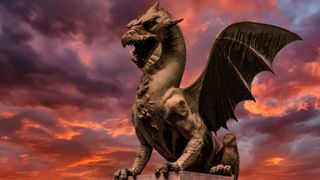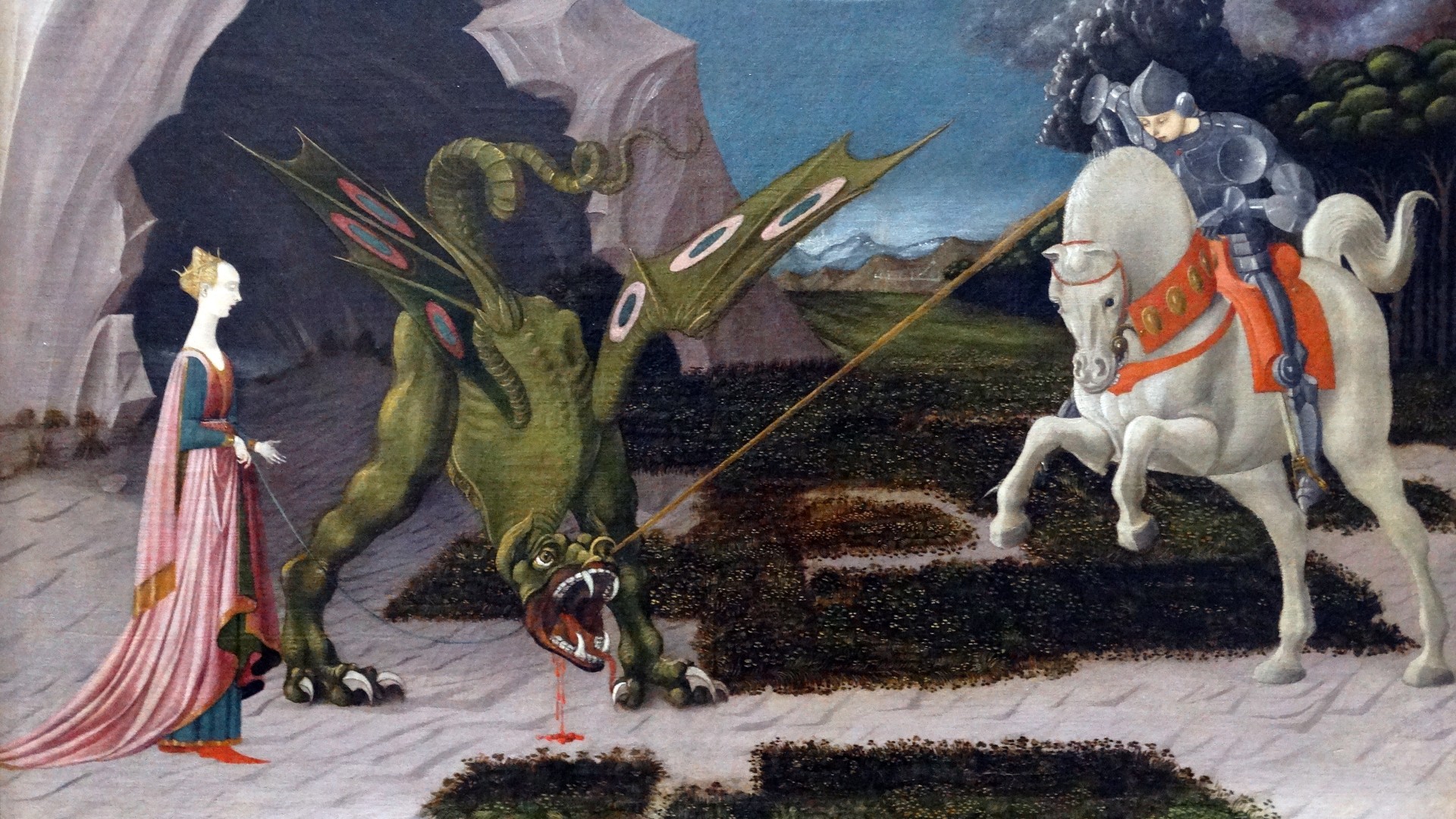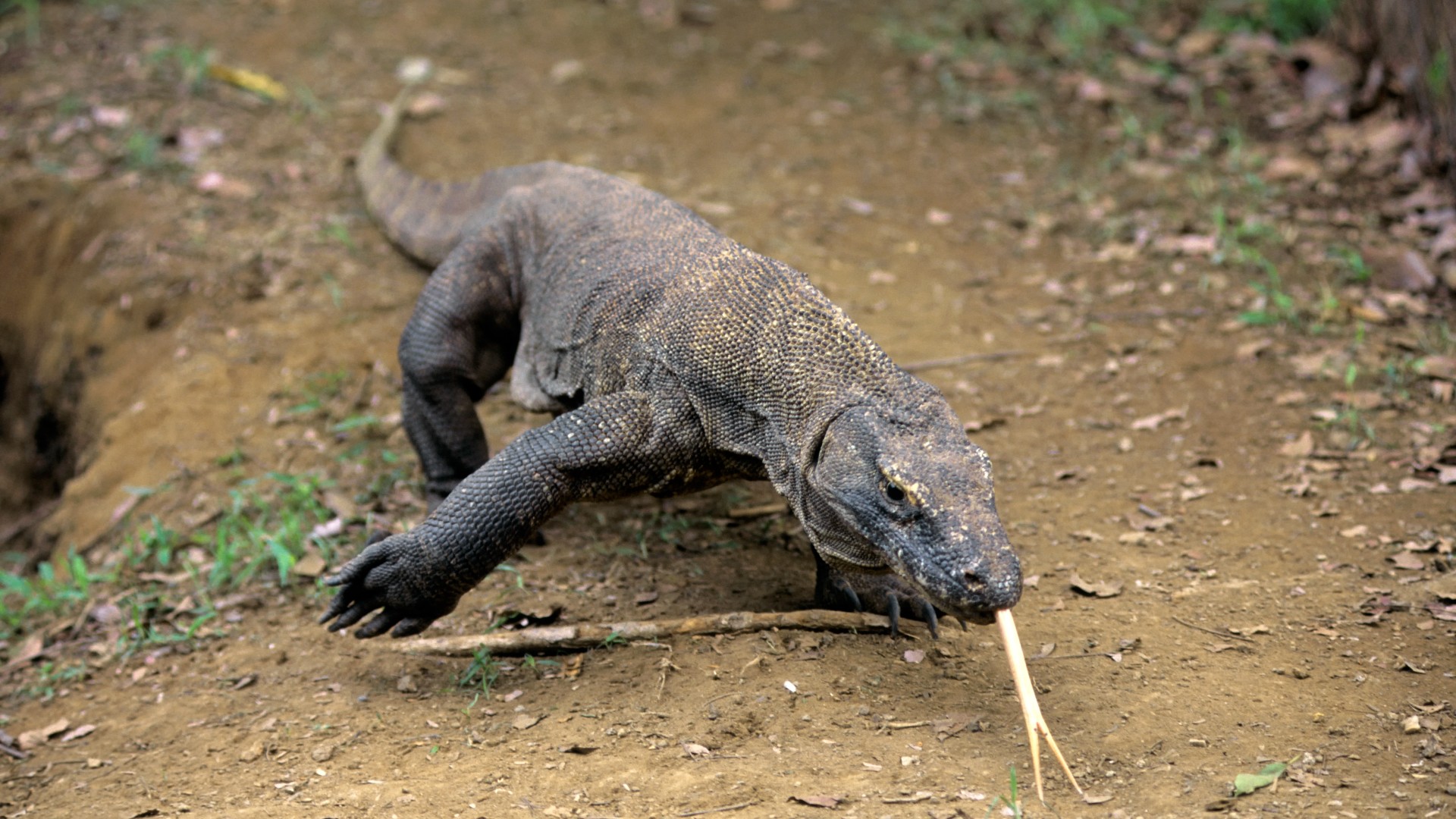Was The Dragon A Real Animal, Ever?
Dragons: A brief history of the mythical, fire-animate beasts

Dragons are amidst the almost popular and enduring of the globe'due south mythological creatures, believed to have been real for centuries.
Dragon tales are known in many cultures, from the Americas to Europe, and from India to People's republic of china. They have a long and rich history in many forms and continue to populate our books, films and television shows, as dauntless heroes routinely fight to slay the beasts.
Information technology's not articulate when or where stories of dragons start emerged, but the huge, flying serpents were described at least as early as the age of the ancient Greeks and Sumerians. According to Scott G. Bruce in his introduction to "The Penguin Book of Dragons (opens in new tab)" (Penguin Classics, 2021), "In the ancient world they took the form of enormous serpents, set up to beat out with their coils and kill with their venomous breath." For much of history dragons were thought of every bit existence like whatsoever other mythical beast: sometimes useful and protective, other times harmful and dangerous.
That changed when Christianity spread across the earth; dragons took on a decidedly sinister interpretation and came to stand for Satan. In medieval times, most people who heard anything about dragons knew them from the Bible, and it'southward likely that most Christians at the time believed in the literal existence of dragons. After all, Leviathan — the massive monster described in detail in the Book of Task, chapter 41 (opens in new tab)— sounds like a dragon:
"Its back has rows of shields tightly sealed together; each is and so close to the next that no air tin pass between. They are joined fast to ane another; they cling together and cannot be parted. Its snorting throws out flashes of low-cal; its eyes are like the rays of dawn. Flames stream from its mouth; sparks of burn down shoot out. Smoke pours from its nostrils every bit from a boiling pot over called-for reeds. Its breath sets coals ablaze, and flames dart from its mouth."
Related: Top x beasts and dragons: How reality made myth
The belief in dragons was based not merely in legend but also in hard bear witness, or at least that's what people thought, long agone. For millennia no i knew what to make of the giant basic that were occasionally unearthed around the world, and dragons seemed a logical choice for people who had no knowledge of dinosaurs.

Different types of dragons
Though most people can hands picture a dragon, people's ideas and descriptions of dragons vary dramatically, according to Grunge (opens in new tab). Some dragons take wings; others don't. Some dragons tin can speak or breathe fire; others can't. Some are just a few feet long; others bridge miles. Some dragons alive in palaces under the body of water, while others can only be found in caves and within mountains, such as Smaug in JRR Tolkein'southward "The Hobbit (opens in new tab)."
As folklorist Carol Rose'due south book "Giants, Monsters, & Dragons: An Encyclopedia of Sociology, Legend, and Myth (opens in new tab)" (Norton, 2001), dragons "have composite features from many other beasts, such equally the head of an elephant in India, that of a lion or bird of prey in the Middle Eastward, or numerous heads of reptiles such equally serpents. Their torso color may range from greenish, crimson, and black to unusually yellow, blue or white dragons."
Zoologist Karl Shuker describes a wide variety of dragons in his book "Dragons: A Natural History (opens in new tab)" (Simon & Schuster, 1995), including giant snakes, hydras, gargoyles and dragon-gods, and the more obscure variants such every bit basilisks, wyverns and cockatrices. At its root, the is a chameleon — its features adapting to the cultural and literary expectations of the era.
Dragons continue to capture the public's imagination in fantasy books and films, actualization in everything from the kid-friendly 2010 picture show "How to Train Your Dragon," to the more developed-oriented "Game of Thrones" books and Boob tube series (opens in new tab) and "The Hobbit" volume and movies. The popular role-playing game Advanced Dungeons and Dragons (opens in new tab) describes more than a dozen varieties of dragons, each with unique personalities, powers and other characteristics. (Black dragons, for example, are fond of eels — who knew?)

Origins of dragons
The give-and-take "dragon" comes from the aboriginal Greek word "draconta," significant "to scout," suggesting that the creature guards treasure, such every bit mountains of gold coins or gems, according to Dean Miller in "Legendary Creatures and Monsters (opens in new tab)" (Cavendish Square Publishing, 2014). But this doesn't really make sense because a creature as powerful equally a dragon surely doesn't need to pay for anything, right? It'south probably more of a symbolic treasure, not for the hoarding dragon but instead a reward for the brave warriors, such equally the Knights of Camelot (opens in new tab) who would vanquish the evil beast.
Dragons are one of the few monsters cast in mythology primarily as a powerful and fearsome opponent to be slain. They don't merely exist for their own sake; they be largely as a foil for bold adventurers. Other mythical beasts such equally trolls, elves and fairies interact with people (sometimes mischievously, sometimes helpfully) but their main role is not every bit a combatant.
The Christian church building created legends of righteous and godly saints contesting and vanquishing Satan in the form of dragons. The most celebrated of these was St. George the Dragon Slayer, who in legend comes upon a town threatened past a terrible dragon, according to English language Heritage (opens in new tab). He rescues a fair maiden, protects himself with the sign of the cross and slays the beast. The town's citizens, impressed by St. George's feat of faith and bravery, immediately convert to Christianity.
Vanquishing a dragon was not just an important career opportunity for any ambitious saint, knight or hobbit, but co-ordinate to legend it was also a way to raise armies. Equally Michael Page and Robert Ingpen note in their book "Encyclopedia of Things That Never Were (opens in new tab)"(Viking Penguin, 1987), "The use of dragon's teeth provides a elementary method of expanding the military machine of whatever country. Information technology was first practiced by Cadmus, Male monarch of Thebes. Offset, prepare a piece of ground as though for sowing grain. Next, catch and kill any user-friendly dragon and draw all its teeth. Sow these in the furrows you take prepared, cover lightly, and stand up well abroad." Easy, peasy, right?
Next, veteran warriors "clad in statuary armor and armed with swords and shields ... emerge rapidly from the earth and stand up in ranks according to the manner in which the dragon's teeth were sown." Apparently these draconis dentata soldiers are a quarrelsome lot and will plow on each other lacking a ready enemy, so if you plan to practice this, be sure your adversaries are nearby.
Scholars believe that the fire-animate element of dragons came from medieval depictions of the mouth of hell; for example, art by Dutch painter Hieronymus Bosch, amid others. The entrance to hell was oft depicted as a monster's literal mouth, with the flames and fume characteristic of Hades belching out. If one believes not simply in the literal beingness of hell, just also the literal being of dragons equally Satanic, the clan is quite logical.

Are dragons real?
Medieval theology bated, few people today believe in the literal beingness of dragons in the style they may believe in the being of Bigfoot or the Loch Ness monster, for instance. The dragon (or at least the dragon version most familiar to Westerners) is only too big and besides fantastic to take seriously or literally. In the mod age of satellite imagery and smart phone photos and videos, it'due south just implausible that any giant, winged fire-breathers inhabit World'southward lands or skies unseen.
However, merely a few centuries ago rumors of dragons seemed to have been confirmed past bystander accounts from sailors returning from Indonesia who reported encountering dragons — Komodo dragons, a type of monitor lizard — which can be aggressive, deadly, and reach 10 feet (3 meters) in length.
In a possible parallel to dragons, information technology was previously believed that the bite of a Komodo dragon was especially deadly because of toxic leaner in its oral cavity, though that myth was debunked in 2013 by a team of researchers from the University of Queensland (opens in new tab) who discovered that the Komodo dragon'southward mouths are no dirtier than those of other carnivores. Western scientists only verified the beingness of the Komodo dragon around 1910 following the investigation of Lieutenant Jacques Karel Henri van Steyn van Hensbroek and Pieter Ouwens, according to The Guardian (opens in new tab), simply rumors and stories of these fearsome beasts circulated long before that.
Dragons, in one form or another, have been effectually for millennia. Through epic fantasy fiction past J.R.R. Tolkien and others, dragons have continued to spark our commonage imagination and evidence no sign of dying out.
Additional resources
To find out more nigh Komodo Dragons, this commodity from the University of Queensland, has a group of researchers discussing the fascinating detail of their mouths. To find more about the story of St. George, read this entry from the Catholic Encyclopedia.
Bibliography
- Scott Thou Bruce, "The Penguin Volume of Dragons", (Penguin, 2021)
- Book of Chore, https://world wide web.biblestudytools.com/chore/41-1.html
- Joseph A Williams, What Dragons Look Like Around The World, Grunge 2021, https://www.grunge.com/462238/what-dragons-look-like-around-the-world/
- Ballad Rose, Giants, Monsters, & Dragons: An Encyclopedia of Folklore, Fable, and Myth (opens in new tab)" (Norton, 2001)
- 9 Things You Didn't Know Almost St George, English language Heritage, https://www.english-heritage.org.uk/visit/whats-on/st-georges-twenty-four hour period/nine-things-you lot-didnt-know-about-st-george/ (opens in new tab)
- Michael Page and Robert Ingpen, "Encyclopedia of Things That Never Were (opens in new tab)" (Viking Penguin, 1987)
- Hannake Meijer, Here Be Dragons: The Million Year Journeying of the Komodo Dragon, The Guardian, 2017, https://www.theguardian.com/science/2017/may/17/here-exist-dragons-the-million-twelvemonth-journey-of-the-komodo-dragon
Source: https://www.livescience.com/25559-dragons.html
Posted by: schubertmompok.blogspot.com

0 Response to "Was The Dragon A Real Animal, Ever?"
Post a Comment